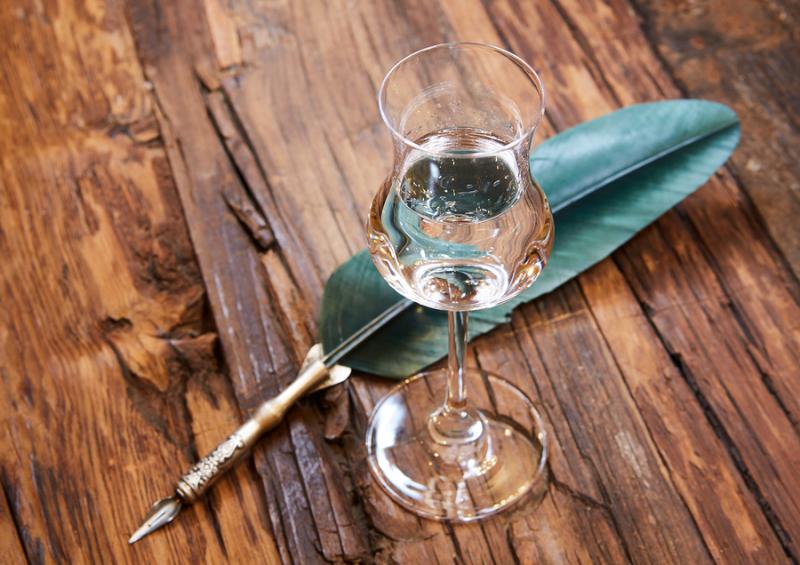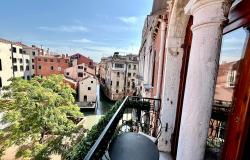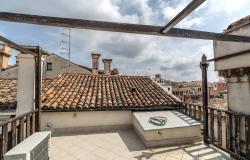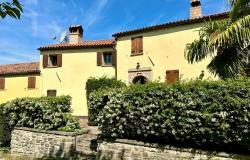Grappa! You either love it or hate it. There is absolutely no sitting on the fence on this one. Some of you may consider that it’s unfair to compare the taste of grappa to that of paint stripper – unfair to paint stripper that is. Yet those of us who adore grappa find in this clear or sometimes amber, fiery and potent distillate something of the very essence, the soul, yes, the true spirit of Italy.
A great Italian meal – simple or sophisticated – is never complete without a grappa (or two) at the finish. And who can deny that a caffè corretto– a short and concentrated espresso ‘corrected’ with just a splash of grappa – is the best pick-me-up in the world, whether taken after or meal or, why not, mid-morning or mid-afternoon, any time at all, in fact.
The reputation grappa has as a rough and throat- burning spirit that you might sometimes regret drinking the morning after is in fact sadly out of date.
Today grappa has become one of the most fashionable – and expensive – of all alcoholic distillates. Artisan distillers produce grappe from select single grape varieties. There are grappe gialle (yellow grappas) aged in wood to gain smoothness. And the finest grappe are packaged in beautiful crystal carafes and containers as true designer works of art – and (this being Italy) sold at elevated designer prices, of course.
Something from nothing
Yet at essence, grappa is really something from nothing. It’s the ultimate, thrifty, countryman’s home distillate, utilizing what would otherwise be thrown away as waste, the vinacce or mass of grape skins and pressings left over after the winemaking processes.
In times past, the home distillation of grappa was an important farm event throughout the country.
The contadini would assemble their homemade alembics in the woods, near to a stream since a source of water is necessary for cooling the snake-like condenser. The pungent, potent liquors they would manage to coax out of such contraptions – made either with wine-drenched vinacce, or else sometimes with soft fruits or even with wine itself – may have been exquisite or they may have been virtually poisonous. But they would certainly have tasted all the better for the fact that they were contrabbando,distilled illicitly far from the prying (and, one imagines, never too vigilant) eyes of the customs officers, and thus made at the expense of the State.
Today such home distilling may still be carried out and indeed it is legal to produce small amounts for home consumption. So if you find yourself in rural parts of the country, or even in farmhouse restaurants, you may be offered such home-created firewaters, the proprietor proudly beating himself on the chest and declaring, ‘Ho fatto, io!’ – I made it myself! Beware: of such homemade grappe are night- marish hangovers made (and believe me, this is the voice of experience).
Artisan distillers
Yet while such home-distilled spirits undoubtedly remain part of Italian culture and folklore, the finest grappa today is created by serious artisan distillers.
The traditional homeland of distilling is the alpine arc of Northern Italy, since the necessity for such high-alcohol spirits has always been greatest in cold, northern countries. Bassano del Grappa, an attractive town at the base of the Dolomites is, as its name suggests, a centre for the production of grappa.
Notable artisan distillers (and there are only a hand- ful creating truly great products) are also located throughout the Veneto, Friuli-Venezia Giulia, Trentino-Alto Adige, Lombardy and Piedmont.
 [Bassano del Grappa]
[Bassano del Grappa]
Not all grappa is artisan-produced: indeed vast quantities are produced on an industrial scale. So as with wine, it’s important to distinguish and recognise those products made with meticulous hand care and attention.
How grappa is made
Grappa is produced by distilling the residue of grape skins, seeds and pulp left over after winemaking. Grappa can be made from the vinacce of a mixture of different grape varieties or it can come from the vinacce of select single-grape varieties. Such grappa di mono-vitigno is produced from aromatic grape varieties such as Moscato, Müller-Thurgau and Traminer as well as from prestigious grape varieties used to make some of
Italy’s finest wines: Nebbiolo, Sangiovese, Aglianico and Fiano di Avellino, for example. Some such grappe may bear the name of the wines from which they are produced, as in grappa di Barolo, grappa di Gavi di Gavi, grappa di Brunello di Montalcino. Whatever the provenance, the most important factor is that the vinacce arrives at the distillery while still fresh and wine-drenched. This pressed mass is already rich in both potential and already converted alcohol and so it is ready to be placed in the alembic.
Industrial distillers may utilize a system of continuous distillation whereby the mass of vinacce is continually supplied, a process that is considerably quicker and cheaper than distillation in discontinuous pot stills that have to be filled and emptied after each small batch. Double distillation in pot stills, though a slower and more time-consuming and hence expensive task, undoubtedly gives the best results for grappa, as it does for spirits such as malt whisky, Cognac and Calvados.

Even here, however, there is considerable scope for variations in production methods: some pot stills are fired by direct heat, others utilize more gentle methods such as the bagno maria (water bath) or steam methods. Paolo Marolo, of the Distilleria Santa Maria, near Alba, Piemonte, prefers the bagno maria method. ‘It’s slower but softer and more gentle,’ he explained to me.
Marolo charges up his small pot stills with between 300-600 kilograms of vinacce, then heats this indirectly through a blanket of hot water. The process allows for a very slow and gentle vaporization (direct heat risks scorching the vinacce and giving bitter, harsh flavours).
The subsequent condensed liquid passes once more through a second process of fractional distillation during which time both the heads and the tails (the first and last fractions) are discarded. Only the cuore – the pure heart or middle cut – is kept. The end result is miniscule, only three to four percent of the original volume of the vinacce.
But what is left is pure grappa of the highest quality.
Grappabianca or Grappagialla
The grappa that emerges from the pot still is a white spirit, that is, totally colourless. Most grappa is consumed as grappa bianca,colourless and unaged.
However, some of the finest grappe are aged in oak barrels and thus take on an amber hue similar to whisky or Cognac. Such grappa is known as grappa gialla or grappa affinato in legno. Make no mistake, the fire and power that is undeniably what grappa is all about is still there. But it’s as if it has been tempered within a glove of velvet. Indeed it is this remarkable combination of immense power, concentration and potency combined with a surprising delicacy, fragrance, smoothness, with not a hint of burning as it slips down your throat, that makes truly great grappa gialla such a sensational spirit.
How to enjoy grappa
I accept, reluctantly, that some people will never appreciate grappa. But before you dismiss this as a drink that’s not for you, I urge you to try and sample some of Italy’s most brilliant examples. In Italy itself, the best enoteche– wine shops – will have a selection of designer grappe from the artisan distillers.
Try and sample a grappa made from aromatic grape varieties such as Moscato, which will be both fragrant and softly sweet in flavour, before moving on to more powerful examples such as grappa di Barolo, which is the pure essence of that heavyweight wine.
Grappa is best enjoyed after a meal, ideally served in small, tulip-shaped grappa glasses. It can be equally good taken as a nip from a hip flask in autumn months, perhaps while outdoors searching for funghi in the woods. And though I wouldn’t necessarily use a great grappa in this manner, I still enjoy nothing more than that caffè corretto…Still not convinced? I simply urge you to take courage, drink deep and discover the spirit of Italy.













